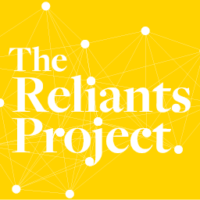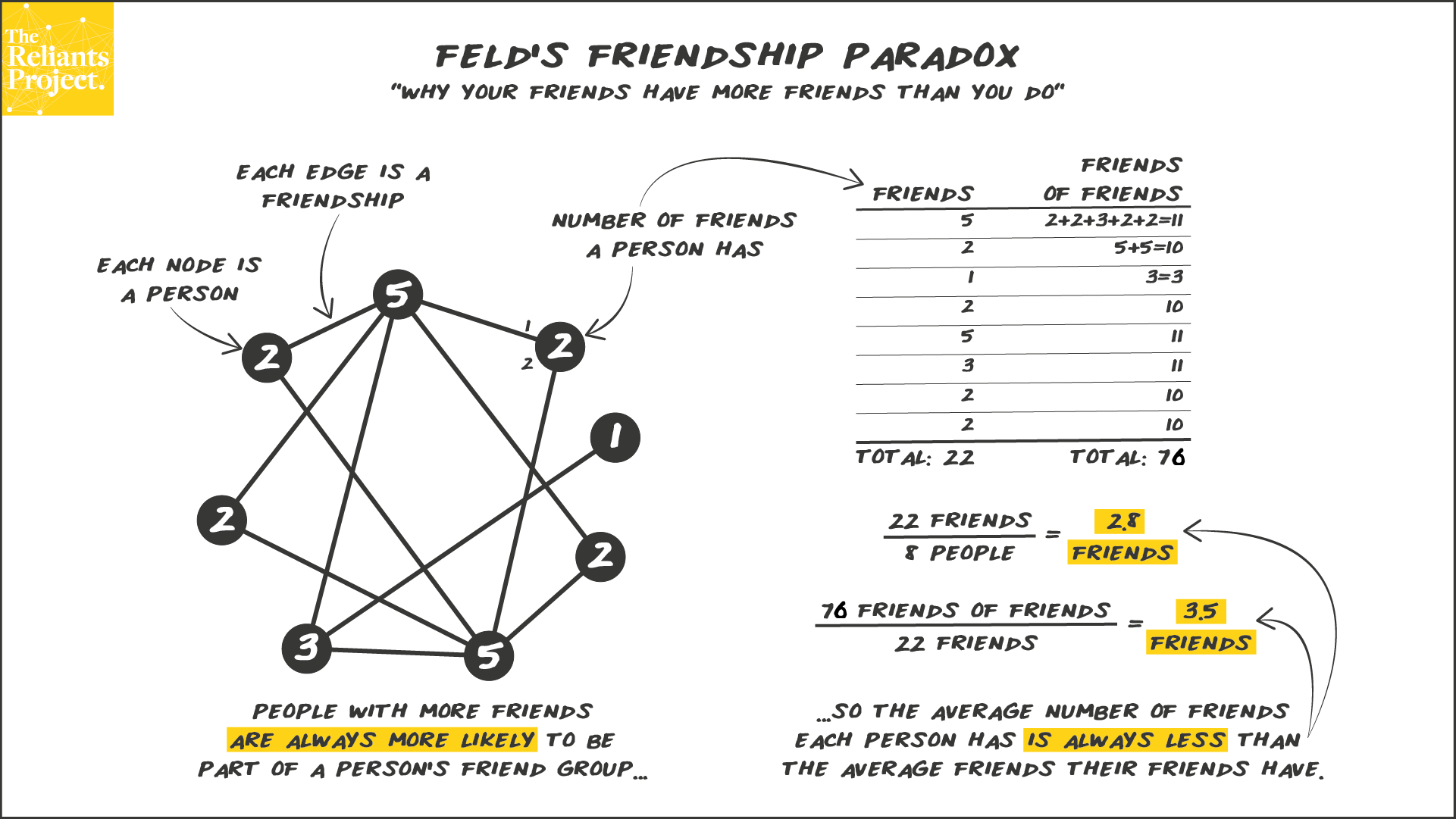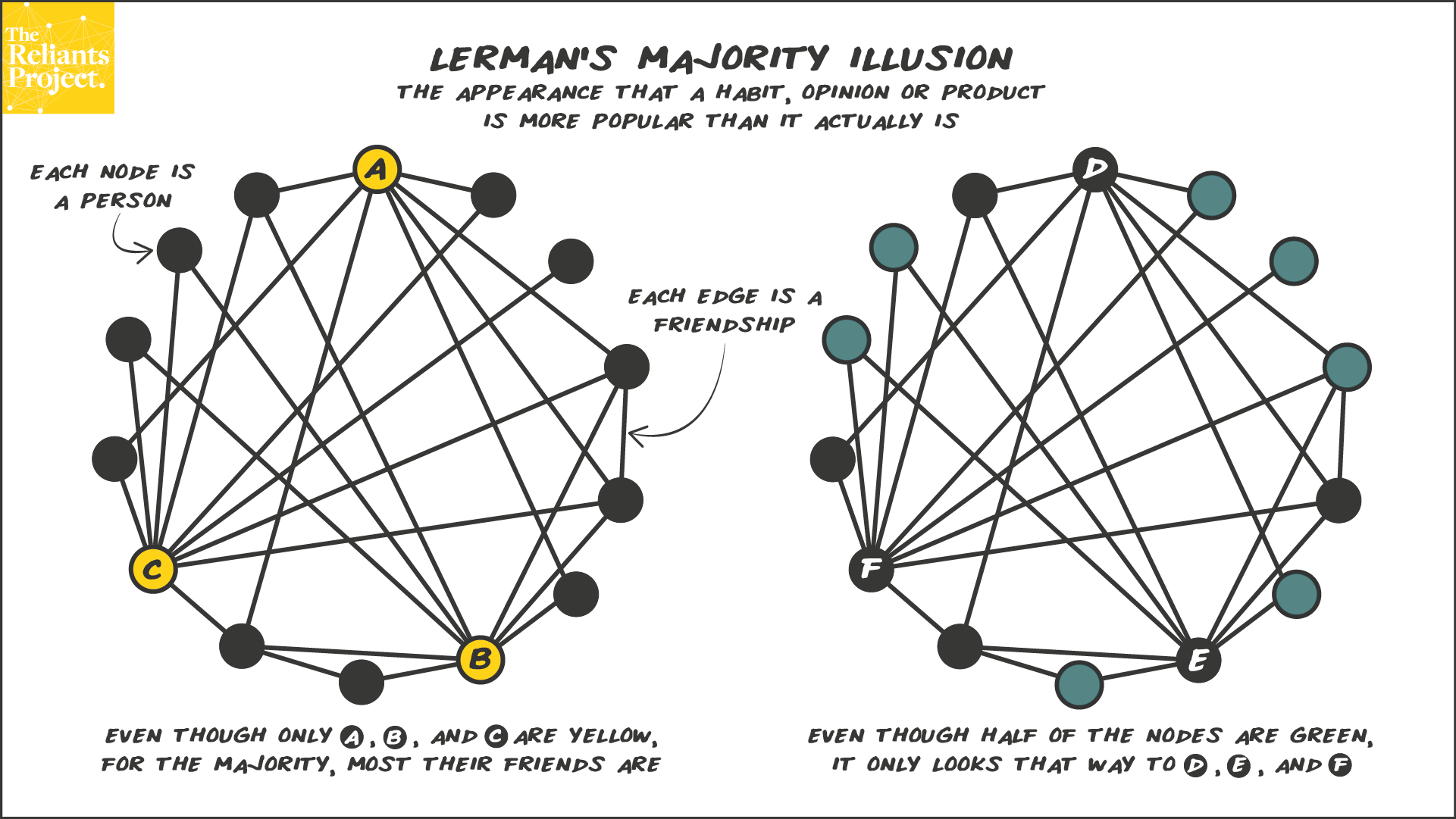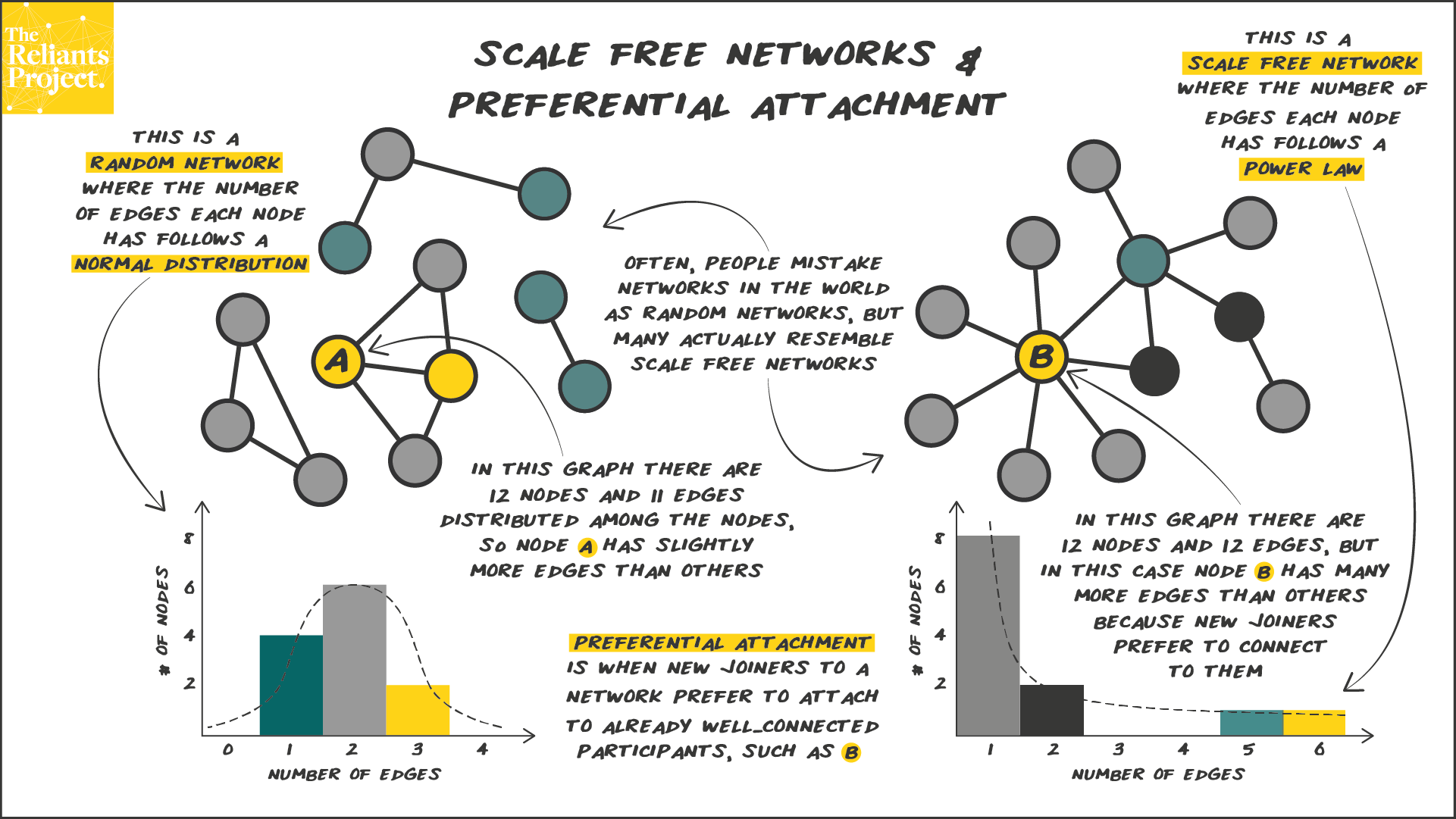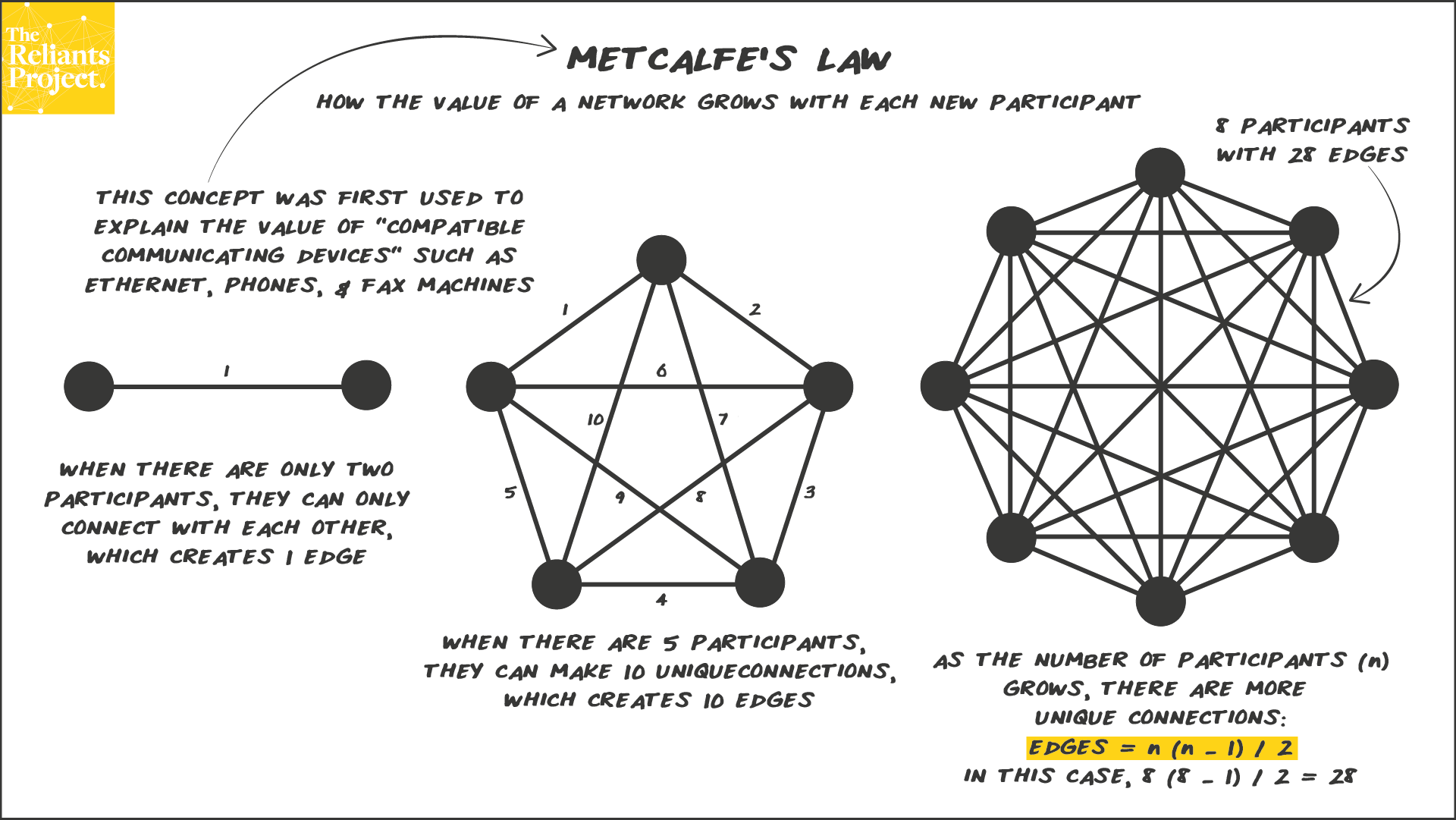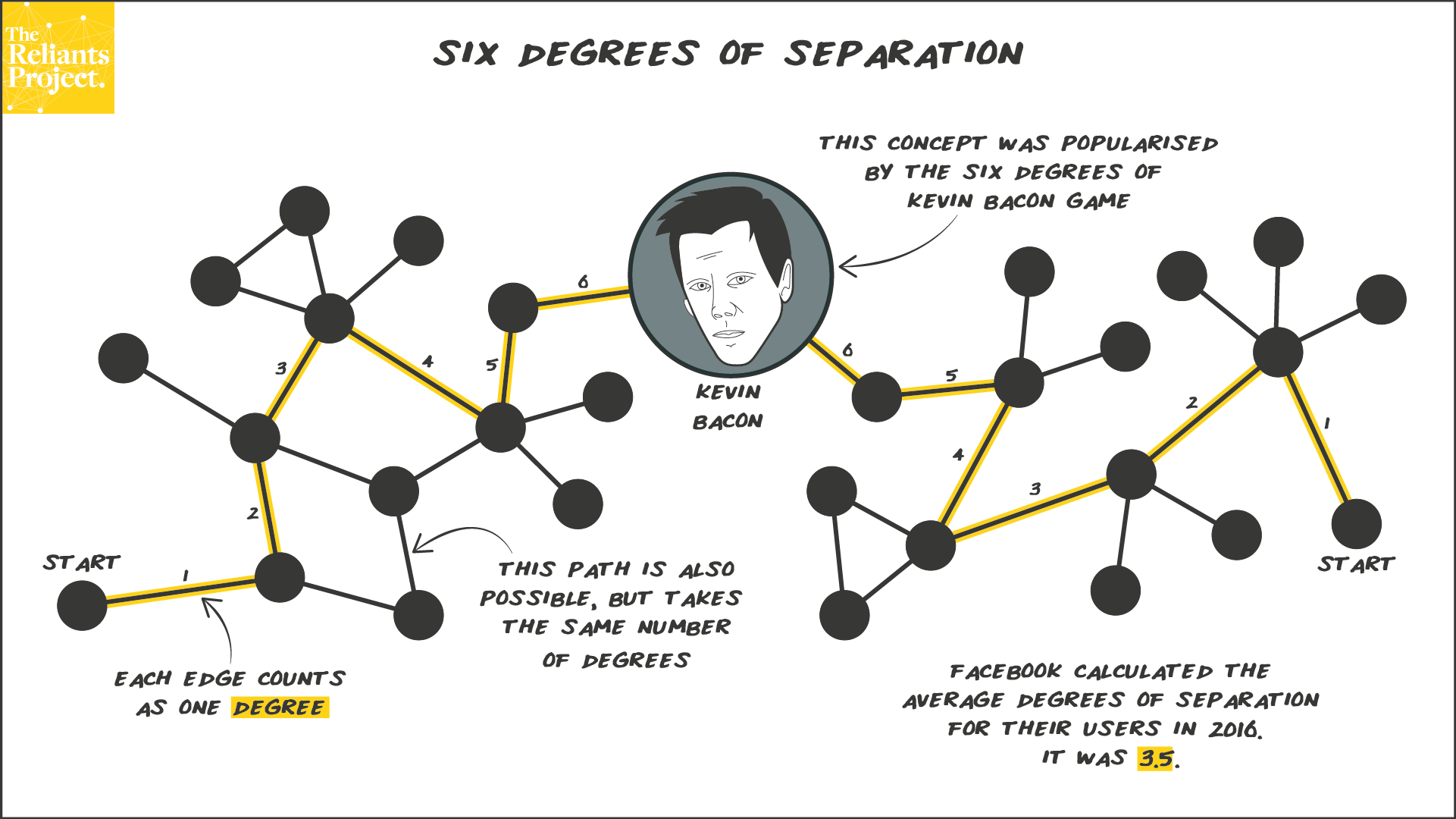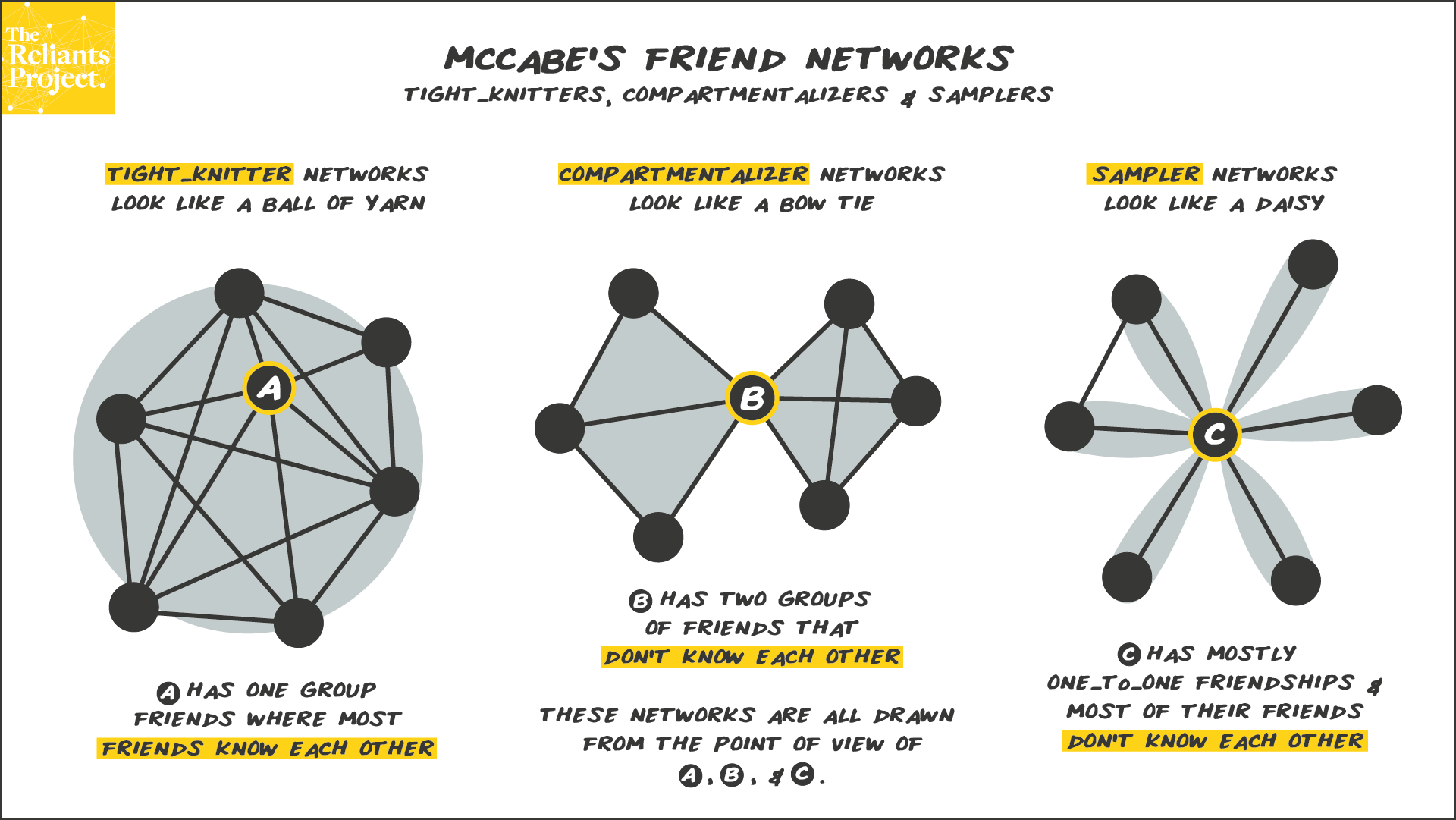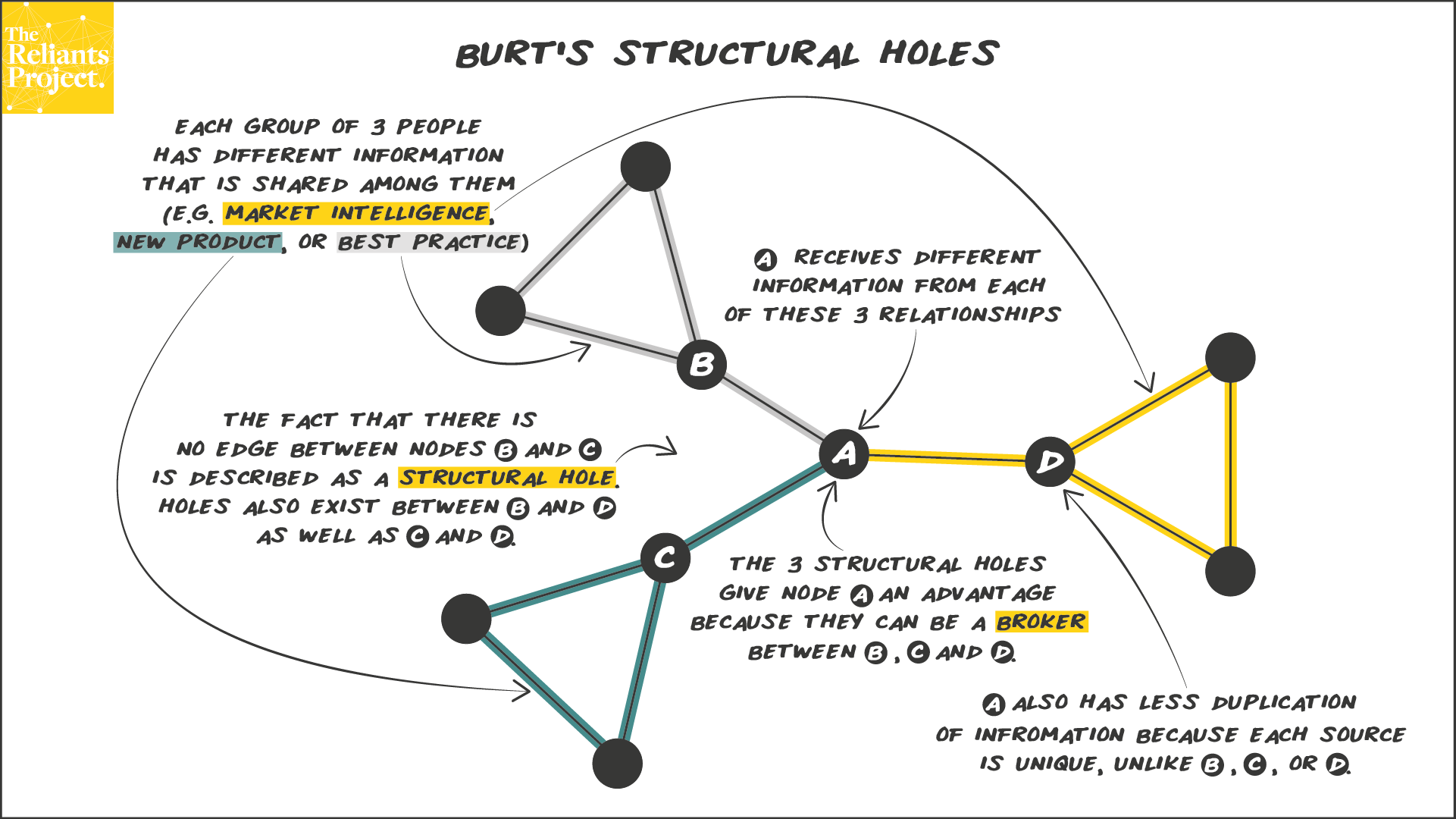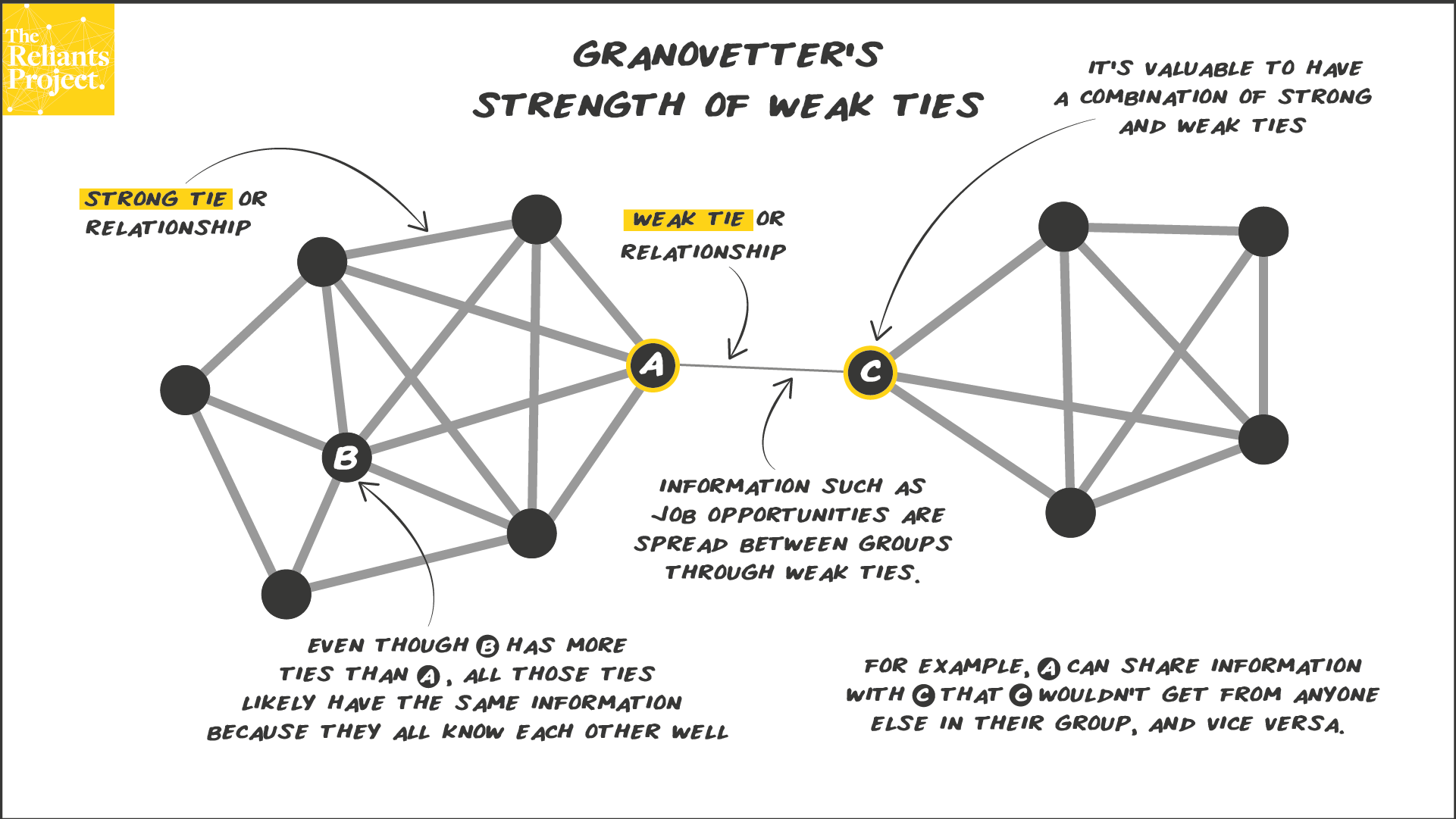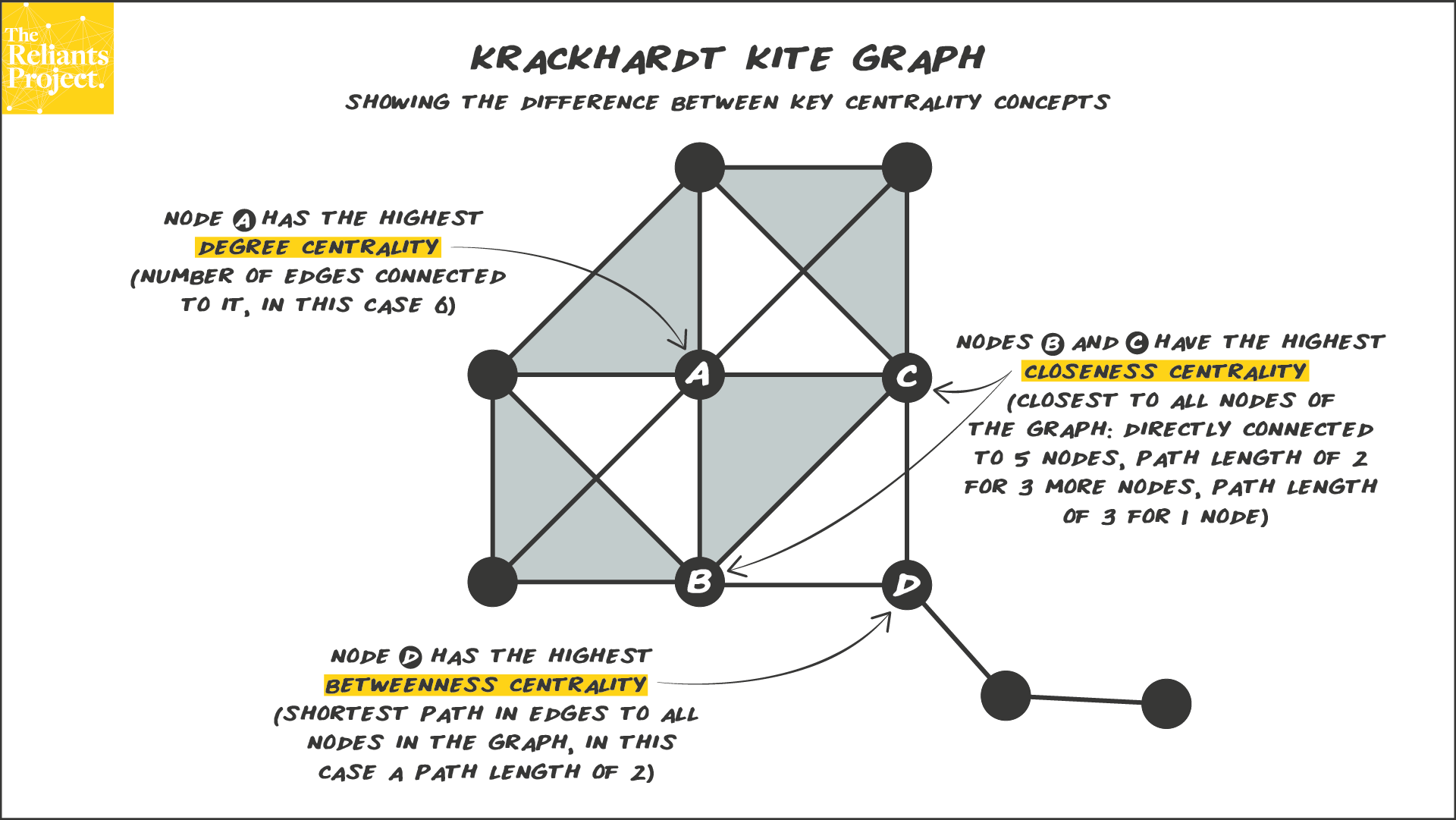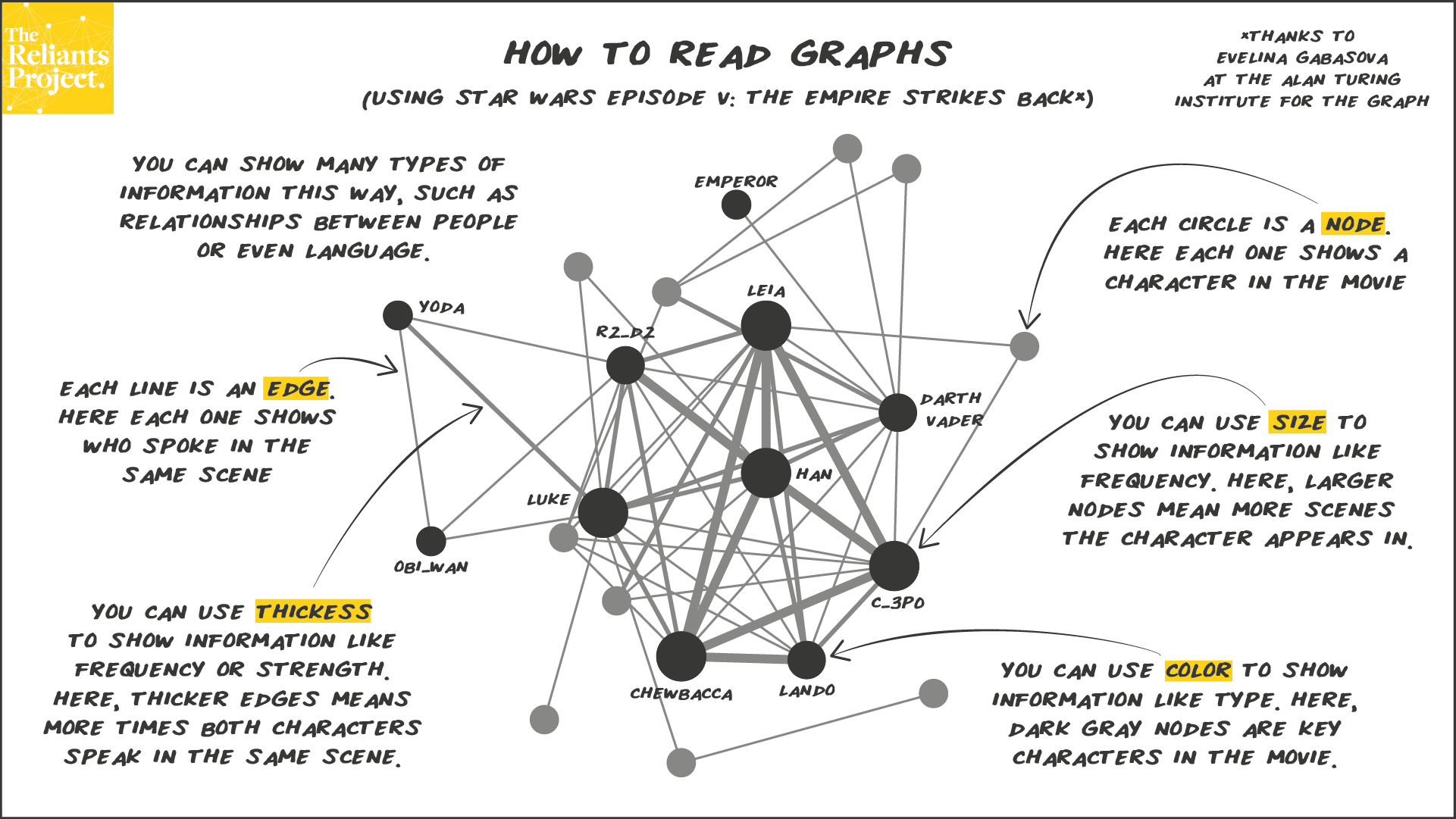This is the 10th post in a series. If you’re not familiar with how to read network graphs, you might prefer to start with Concept 1 or Concept 2. The friendship paradox was first identified by Scott Feld in 1991, which he wrote about in his paper “Why your friends have more friends than you do”. He […]
All posts filed under ‘Concepts’
Concept 11: Lerman’s Majority Illusion and How it Distorts Our Perception
This is the 11th post in a series. If you’re not familiar with how to read network graphs, you might prefer to start with Concept 1 or Concept 2. This concept is directly related to the friendship paradox we just discussed in Concept 10. Lerman and her colleagues identified this phenomenon and studied it in several real-world […]
Concept 9: Scale Free Networks and Preferential Attachment
This is the 9th post in a series. If you’re not familiar with how to read network graphs, you might prefer to start with Concept 1 or Concept 2. This is one of the most complex concepts in this series, but we actually encounter it every day when we go online. Barabasi’s groundbreaking work in the late […]
Concept 8: Metcalfe’s Law and Network Effects
This is the 8th post in a series. If you’re not familiar with how to read network graphs, you might prefer to start with Concept 1 or Concept 2. Network effects are a phenomenon that makes some products and services more valuable with each additional person who uses them. Communication devices like mobile phones aren’t very valuable […]
Concept 7: Kevin Bacon and Six Degrees of Separation
This is the 7th post in a series. If you’re not familiar with how to read network graphs, you might prefer to start with Concept 1 or Concept 2. Many people have heard about the concept of six degrees of separation because of the popular Kevin Bacon game that was thought up by 3 college students in […]
Concept 6: McCabe’s Tight-Knitter, Compartmentaliser and Sampler Friend Networks
This is the 6th post in a series. If you’re not familiar with how to read network graphs, you might prefer to start with Concept 1 or Concept 2. Let’s take a look at the friend networks of Alice (A), Bob (B) and Charlie (C). These types of network graphs are often called egonets or sociograms, which […]
Concept 5: Burt’s Structural Holes and When You Can be a Broker
This is the 5th post in a series. If you’re not familiar with how to read network graphs, you might prefer to start with Concept 1 or Concept 2. Alice (A), Bob (B) and Charlie (C) are back, but this time they brought Dina (D). Let’s say that Bob, Charlie and Dina are each part […]
Concept 4: Job Opportunities and Granovetter’s Strength of Weak Ties
This is the 4th post in a series. If you’re not familiar with how to read network graphs, you might prefer to start with Concept 1 or Concept 2. Let’s say Bob (B) shares information about a new product with one or more members of his group. Alice (A) and Bob are directly connected to […]
Concept 3: Using Krackhardt’s Kite to Explain Centrality
This is the 3rd post in a series. If you’re not familiar with how to read network graphs, you might prefer to start with Concept 1 or Concept 2. Above and beyond reading the basic information shown in a graph, there are common metrics that people can measure to better understand a network. One of […]
Concept 2: How to Read Graphs Using The Empire Strikes Back
The Star Wars movies have been subject to an incredible amount of analysis, including a fair amount of network analysis. Here’s what we can learn from reading this graph: There are 21 characters in The Empire Strikes Back, 11 of which are key characters There are 5 characters that show up in the most scenes […]
